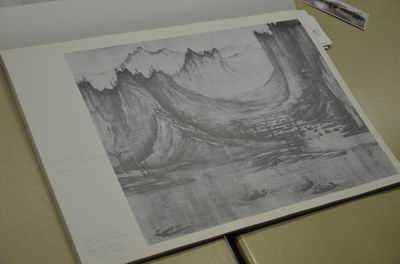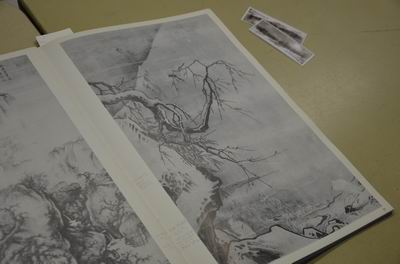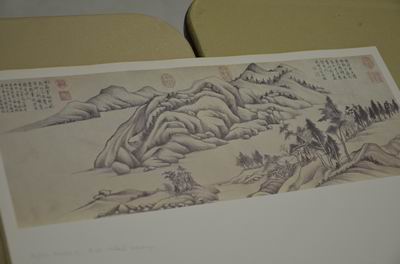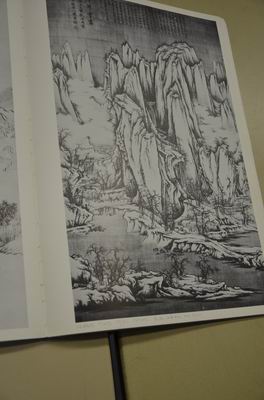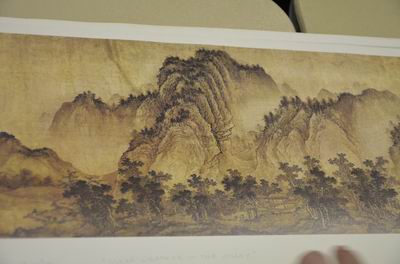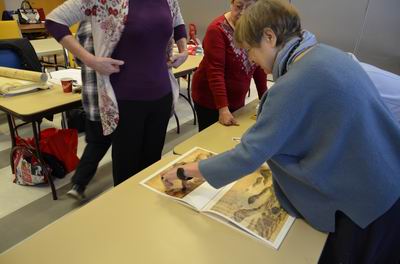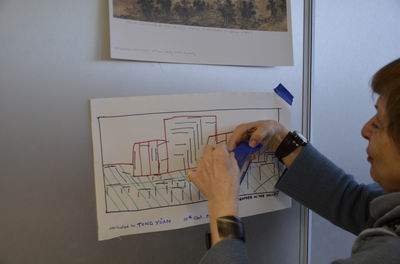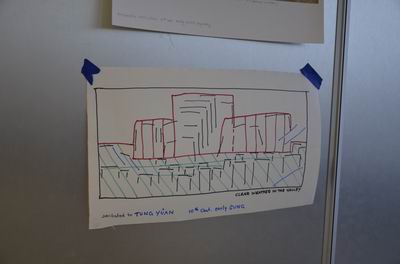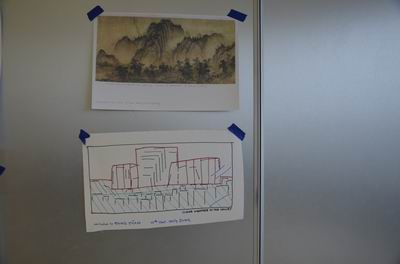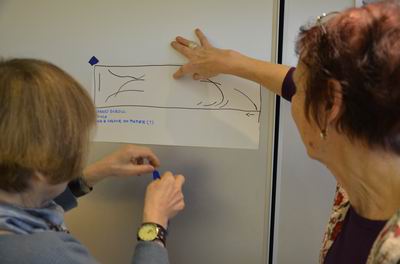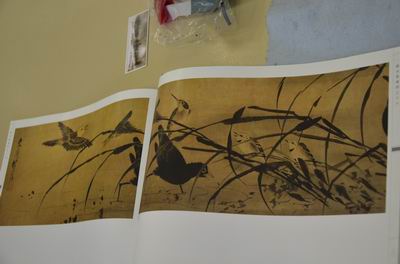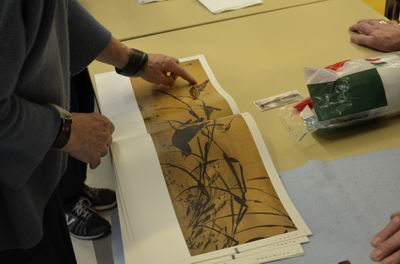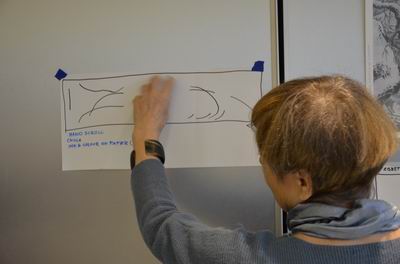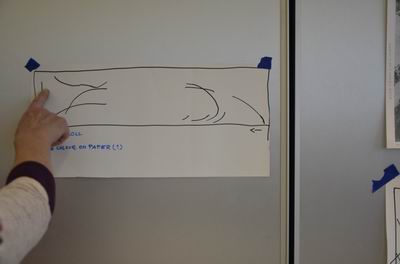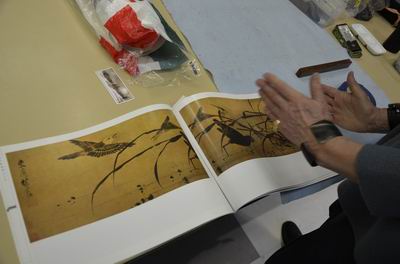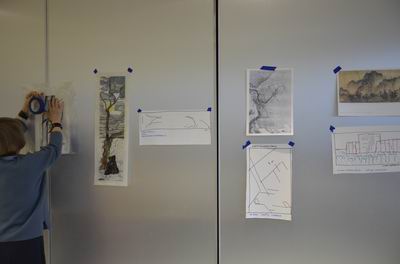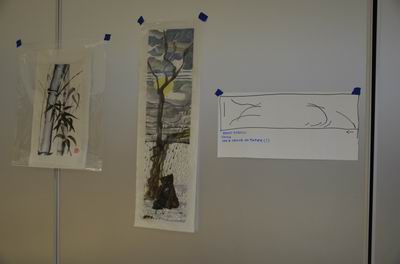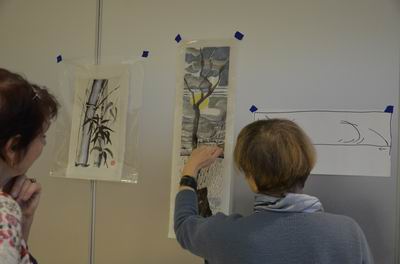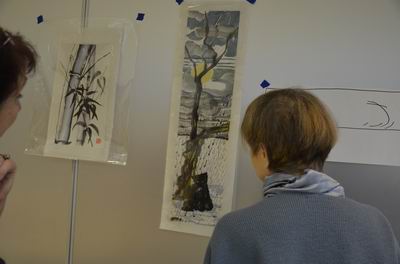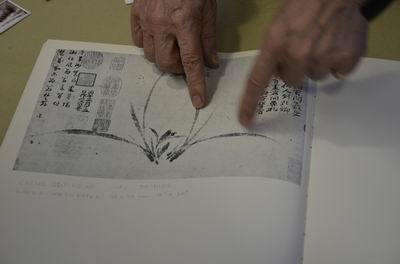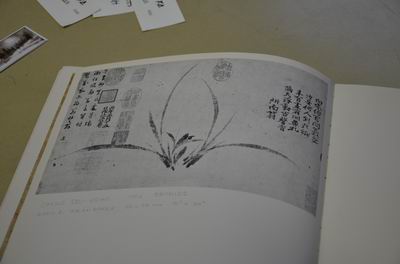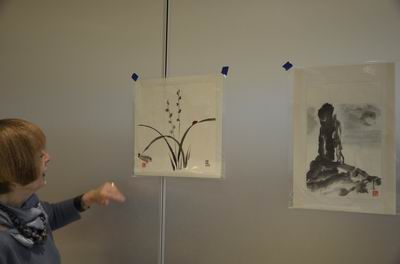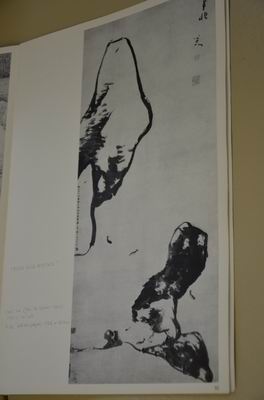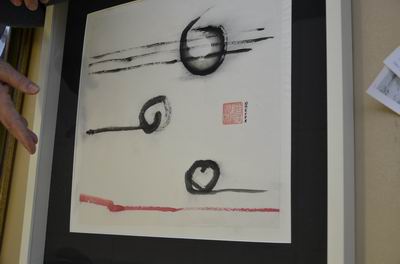Dynamics of Composition with Elisabeth Rittinger - April 14th, 2018
Paintings have structure and dynamics. For example, the structure could be some mountains and the dynamics could be a winding river and blowing wind. It is the interplay between structure and motion that attracts the eye. Elisabeth Rittinger began her workshop by looking at well-known compositions and then analyzing the dynamic elements that make the paintings come alive. For example, the straight, vertical mountains in this painting are offset by a diagonal line that leads you into the painting along the water way.
The tree's branches in this painting bring curves and diagonal lines into the forefront of the massive mountains behind it. Look closely and you will two egrets at the bottom on rocks. It is these contrasts that make the painting attractive.
These smooth mountains might remind you of the paintings by Lawren Harris. It is the curving lines with trees that invite you into the painting.
The curving inlet set against the dominating mountains makes this painting interesting and leads you to an almost mystical place.
Notice how the diagonal lines in this painting called Clear Weather in the Valley bring you into the mountainous landscape. The artist uses light to highlight the curves and diagonal lines, making you want to step in and explore this landscape.
Elisabeth Rittinger emphasized that looking at paintings and seeing the lines in them lets you realize why they succeed, and can help you create your own effective paintings.
Creating an outline of a painting with just the lines lets you analyze the structure and flow of a painting.
This diagram of the painting Clear Weather in the Valley sets rigid mountains against a wooded area of rustling trees below. Look carefully and you will see diagonal lines on both sides of the painting.
Seeing the painting beside the analysis of its structure provides insight into its content.
Another painting that Elisabeth Rittinger examined with dynamic and static lines indicated motion from the right side to the left.
Here is the painting, which is an old scroll.
As Elisabeth Rittinger explained, the birds on the left provide some motion.
However, it is the bending grass on the right that reveals the dynamic, strong force of the wind.
The writing on the left is where the motion of the painting ends.
Elisabeth Rittinger suggested that artists focus on the dynamic source that acts as a driving momentum in a painting.
More paintings were examined with lines, curves and diagonals. Each analysis lets artists see a structure and flow of action that they might otherwise have missed.
A modern painting by Elisabeth Rittinger has a cat at the base of a tree in the rain. It is a captivating painting with clouds, a downpour of rain, and a cat that seems to be thinking about the situation.
Elisabeth Rittinger showed how the direction of the rain leads the eye from the sky to the abject cat.
Colour is also a part of this painting's dynamics: a golden sun, a gold mixed in the branches and tree trunk, and the golden eyes of the cat.
Look at the blades of this orchid.
The artist has used arcs that are not completely symmetrical and blades that twist in a life-like way. It is balanced but not perfectly balanced. The result is a living, vital orchid even in this ancient painting.
Elisabeth Rittinger looked at another one of her own paintings.
Note how the dynamics of the blades work, starting at the lower left and working upwards to the upper right, where your eye finds a beetle.
This interesting work, Fish and Rocks, places the small fish beside some sizeable rocks. Yet it is the fish that capture your eye and make you think about the contrasting objects.
Elisabeth Rittinger concluded with one of her contemporary paintings. The lines provide the structure and the circles bring motion into this abstract design. Like the other paintings, you can understand that the dynamics play a role in your attraction to the work. At this point, we wanted to begin our own paintings using the dynamics we had learned. However, an ice storm on this day had us continue our painting at home.
You can learn more about Elisabeth Rittinger in the links section.
